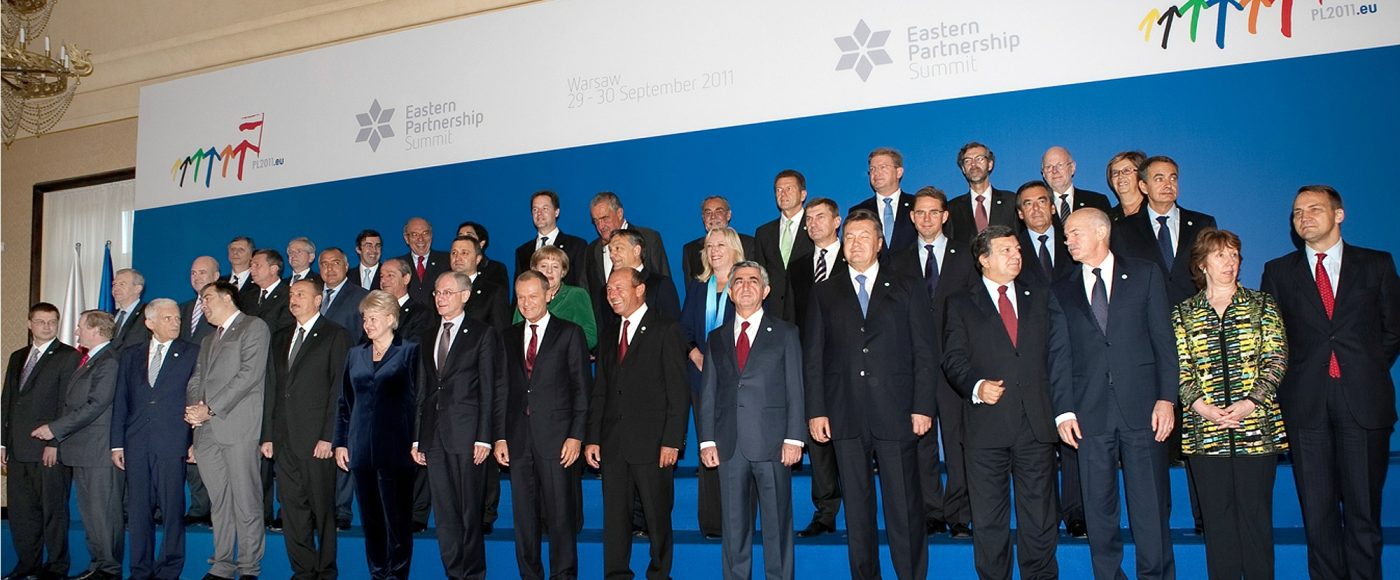After 10 years of the “Eastern Partnership” what do we have to celebrate? There is modest, homegrown progress in Armenia; Azerbaijan and Belarus are still autocracies; Georgia is going backwards; Moldova is still a basket case. Ukraine, compared with its plight in 2009, is doing well but has paid a terrible price in blood and suffering. The anniversary should be a time for somber reflection, not self-congratulation.
The idea – originally a Polish-Swedish-Czech initiative – was a good one. The European Union would support a virtuous circle of reform and prosperity in its ex-Soviet neighbors. Decisions on the ultimate goal, of EU membership, were postponed. But everyone could agree that convergence on EU standards was inherently good, and also softened the hard question of membership.
One problem was that one policy was supposed to fit six countries with wildly differing sizes, backgrounds, and geopolitical orientations. Another was that local elites had little appetite for reforms that would be good for the public interest, but bad for their own private ones. The EU underestimated that.
Worse, it misread the Kremlin. Well-meaning, naive Eurocrats saw the Eastern Partnership as a win-win. Surely Russia would be pleased if its neighbors were well-run and prosperous?
Actually, Vladimir Putin and his gang prefer the Kremlin’s ex-colonies to be weak. Ill-run countries make Russia look good. And they are easier to boss around. The EU’s growing influence was in the Kremlin’s eyes a major strategic threat, and Russia was prepared to do a lot to counter it.
These objections were not insurmountable. The EU could and should have said to Russia: “We don’t expect you to like this. We will do what we can to make it palatable. But be in no doubt we are going to do it. Remember: we are three times bigger than you in population and ten times bigger in GDP. So don’t get in the way.”
That was the language of NATO expansion. It worked. Russia respects and accepts strength.
But in the Eastern Partnership it scented, rightly, weakness and muddle. The EU lacked the capacity and the willpower needed for an ambitious eastern policy. The Kremlin had both. It made effective counter-offers and used local proxies to delay and frustrate any westward moves. US influence could have been a counterweight to that. But EU-US cooperation on Eastern Partnership issues was belated and fitful.
In Ukraine, the Yanukovych regime’s treasonous willingness to betray the country’s interests by siding with the Moscow sparked the Euromaidan (good) followed by the occupation of Crimea and war in the East (bad). Ukrainians died in the streets of Kyiv, with their blood soaking into the EU flags they carried. The heroism and passion they showed was lost on the pen-pushers of Brussels.
The Eastern Partnership is not a complete failure. It has brought visa-free travel and free trade agreements in Georgia, Moldova, and Ukraine. It provides a framework for further reforms and closer association. But a bolder, clear-eyed approach could have brought so much more, in the 10 precious years that now have dribbled away.
The good news is that Russia has botched the opportunity that the failure in Brussels created. The Putin regime rules by public fear and private favor, not by offering an attractive example. For all its faults, Europe is still unmatched as a cultural, economic, legal, political and social lodestar. China is a competitor, but still a distant one.
The bad news is that the price of the Eastern Partnership’s shortcomings was paid not by the Eurocrats responsible for it, but by the people of the countries concerned. Brussels owes an apology to the eastern neighbors. I doubt they will receive it.
Europe’s Edge is CEPA’s online journal covering critical topics on the foreign policy docket across Europe and North America. All opinions expressed on Europe’s Edge are those of the author alone and may not represent those of the institutions they represent or the Center for European Policy Analysis. CEPA maintains a strict intellectual independence policy across all its projects and publications.

War Without End
Russia’s Shadow Warfare

CEPA Forum 2025
Explore CEPA’s flagship event.





